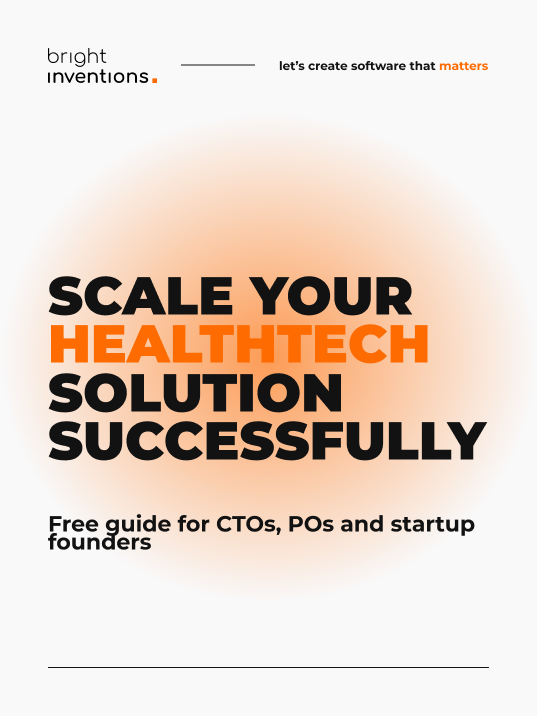How Data-Driven Development Saved a Successful FemTech App Onboarding From a Failure
An 80% onboarding conversion rate for a mobile app is generally a successful metric. However, particularly in the world of software development, everything can be optimized. Or maybe not? Follow the story of how the pursuit of optimization, based solely on assumptions, nearly destroyed the successful onboarding of a FemTech app, and discover how we prevented this using the power of data!

The hypothesis: simplifying onboarding to increase the app sign-up rate
While scaling the mobile application offering nutrition and fitness recommendations for pregnant women, we focused on key elements that would help attract more soon-to-be moms. One of the aspects was the quality of the app's onboarding process.
The pregnancy app in question had, at that time, an onboarding process containing 8 steps, divergently helping the app to customize the experience for its expecting women. So, there weren't only the typical login screens, but the females also answered a bunch of questions such as:
- name,
- fitness and exercise preferences,
- food preferences,
- allergies.
Although the onboarding conversion rate was 80%, our client – a Germany-based FemTech startup – questioned whether the detailed onboarding process might deter users from signing up. We jointly decided to validate this hypothesis.
dive into HealthTech

The validation: confronting assumptions with data
For testing purposes, we shortened the onboarding process from 8 to 3 steps, focusing on login, name, and accepting terms, while omitting questions about fitness, food preferences, and other specifics related to pregnancy. What was the outcome? The app onboarding conversion rate plummeted from 80% to 50%.
How were we able to verify that? Naturally, thanks to data-driven development which is a process of creating software based on data-driven decisions. This approach couldn't take place without analytics tools measuring user actions. We install these at the early stage of every app we develop. In most scenarios (the pregnancy app included), we install a few different analytics tools to have the opportunity to compare data from various sources and ensure its accuracy.
After noticing the initial drop in the onboarding rate, our first step was to verify that there wasn't any crucial bug preventing women from completing the onboarding process. Once we eliminated that possibility, we waited to collect meaningful data. After analyzing the numbers, we decided with the client to revert to the previous onboarding method. Subsequently, the app onboarding rate returned to 80%.
Imagine making these crucial changes without data-driven development relying only on our feelings or assumptions. The numbers provided by analytical tools were quite straightforward and quickly helped us verify the hypothesis and come back to the onboarding that attracted more moms-to-be.
Watch the video to get more onboarding insights from Mateusz Klimczak, Partner & Head of Delivery @ bright inventions:
Key Points to Remember While Designing App Onboarding for Pregnancy Apps
Confront general best practices 👊
The shorter the onboarding, the better. You might have read that a few times. In the case of applications targeting specific users (like pregnant women), a longer onboarding process might yield a higher completion rate. This approach makes women feel cared for and understood by the app creators.
Show that you know your audience with a personalized approach 👐
More detailed onboarding gives the impression that the app experience will be truly personalized. This is particularly crucial in developing FemTech solutions tailored to meet the unique needs of women navigating pregnancy and the postpartum stage.
Use onboarding to start to build the bond with users 🤝
Thoughtfully designed onboarding is a crucial first step in forging a long-term bond with women in the very unique moment of their lives. This is one of the first user interactions, and building a bond and trust from this moment is essential.
Testing ideas is crucial, but final validation should always be data-driven 🫵
Assumptions should never be a driving force of any change in software development. Always base your decision on data.
If you are not sure what metric to measure and what analytics tools you should install, check our mobile app metrics cheat sheet.
Are you ready to discuss your app's onboarding?
Looking for ways to optimize your app onboarding with data-driven development? Contact us to set up a free consultation in 48 hours.


